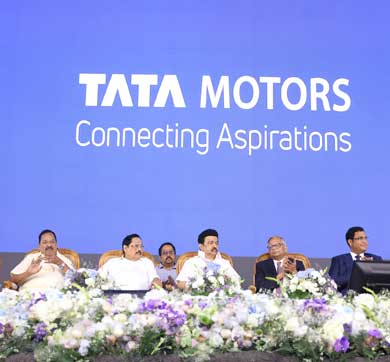October 2024 | 696 words | 3-minute read
Advancements in technology have transformed traditional car design into a specialised, multidisciplinary field, enhancing traditional artistry with digital tools. The adoption of artificial intelligence, virtual reality, and immersive hardware has further revolutionised the design process, enabling more sophisticated visualisations and fostering greater collaboration and experimentation. This dynamic evolution of design methods promotes innovation and creativity within the industry.
Car designing is geared towards creating a cohesive, compelling brand image that leaves an indelible impression on people’s hearts and minds. There is no single thread or trend to follow; every brand and designer carves their own trajectory, making for a thrilling, creative, and innovative future of transportation design.
The road to zero
For automobile designers focused on creating the future of mobility, prioritising sustainability has become more significant than ever before. Designers today are at the intersection of creativity and responsibility, and are tasked with charting a course towards a future where zero emissions are not just an aspiration, but a design philosophy. This future faces an urgent challenge: achieving ‘road to zero’ — a transportation system with net zero emissions.
Sustainability has redefined the entire design space, pushing the boundaries of creativity, urging a holistic approach, considering the entire life cycle of the car. This involves two key strategies: firstly, prioritising timeless designs to ensure longevity of the car, and, secondly, the ‘new forever’ approach, which involves consistently updating and enhancing the car’s features, performance, materials, and electronics throughout its lifespan. As we delve into the multifaceted aspects of sustainable automotive design, we acknowledge the power of collaboration, innovation and inspiration in guiding the path towards zero emissions, where our designs transcend individual vehicles to contribute to a cleaner, healthier world for generations to come.

Transforming products and processes
The journey towards sustainability starts with the right material choices, which favour innovative, eco-friendly options to reduce the environmental impact. Beyond the aesthetics, our responsibility as designers is to select materials and manufacturing processes that will enhance quality and efficiency, thus conserving energy. Furthermore, we collaborate with product and strategy teams to tailor vehicles for evolving service and ownership models. Efficient energy use is pivotal to our pursuit of zero emissions. The integration of cutting-edge technologies, such as lightweight materials and energy-efficient propulsion systems, forms the backbone of sustainable automotive design. By embracing advancements in battery technology and optimising energy consumption, we strive to enhance the efficiency of our vehicles, ultimately paving the way for a more sustainable driving experience.
Driving sustainable design
The road to zero emissions is not solely paved with technological advancements; it also involves a fundamental shift in design philosophy. Human-centric design places the user at the forefront, emphasising simplicity, functionality, and the seamless integration of sustainable features into the driving experience. From intuitive user interfaces to ergonomic interiors, our goal is to create vehicles that not only benefit the planet but also enhance the lives of those who inhabit it.
The journey towards sustainability is not one that can be traversed in isolation. Collaboration with like-minded partners, researchers and stakeholders is paramount. By fostering a culture of innovation and openness to new ideas, we can collectively push the boundaries of sustainable design. Continuous research, development and collaboration serve as the driving forces behind our commitment to creating a greener, more sustainable automotive future.
In the realm of automotive design, the pursuit of sustainability is not merely a choice; it is an imperative that defines our responsibility towards the planet and its inhabitants. As designers, we are acutely aware of the profound impact our design choices can have on the environment. The road to zero emissions is challenging, but through innovative materials, energy-efficient technologies, lifecycle design thinking, human-centric design and collaborative efforts, we pave the way towards a sustainable future — one where our designs echo a commitment to the planet without compromising on performance or aesthetics. This is our vision, and this is the path we tread as stewards of a greener, more sustainable tomorrow.
The author, Ajay Jain is Head, India Studio and Global Design Strategy, Tata Motors.































